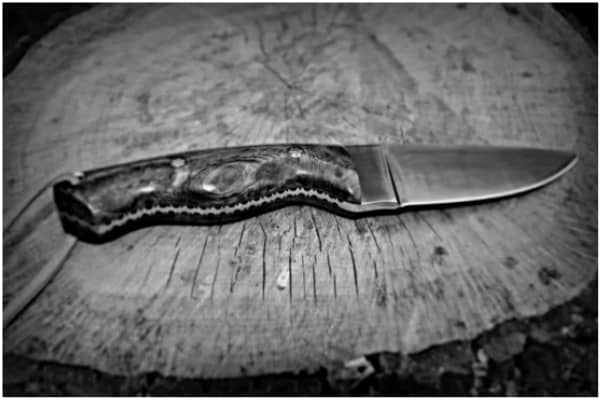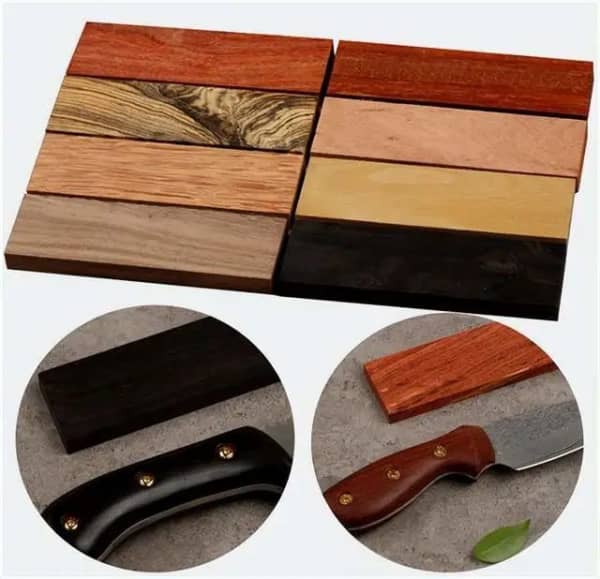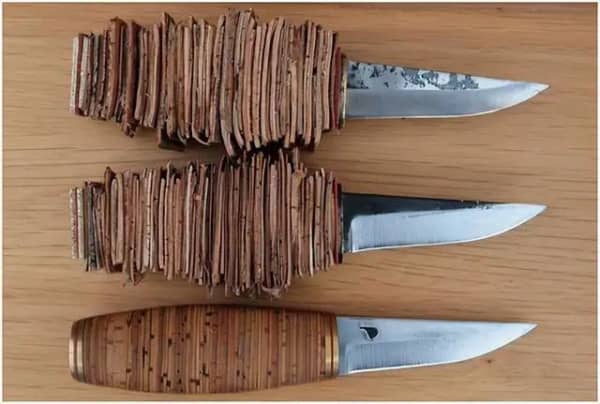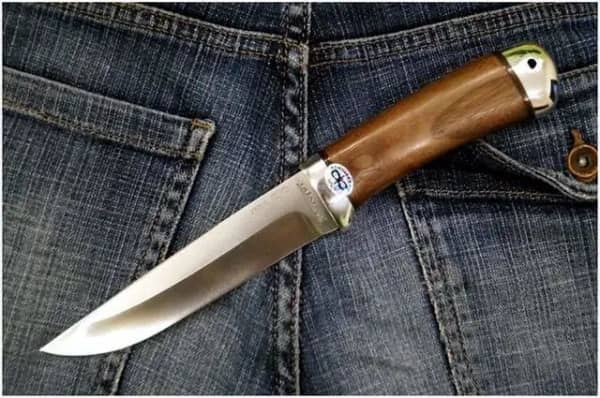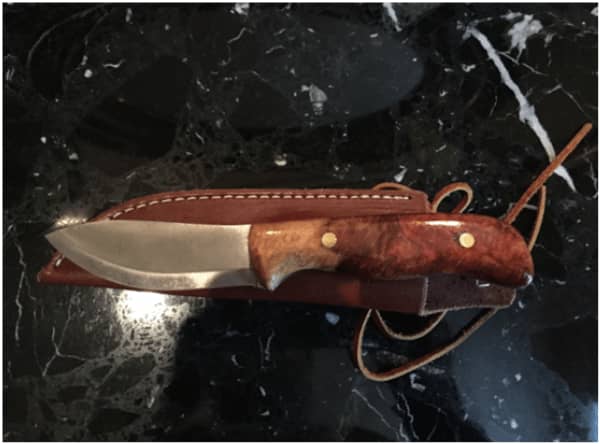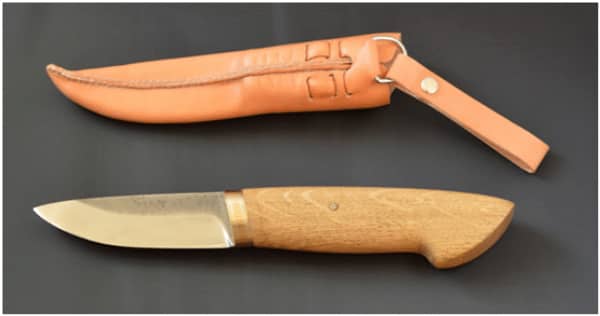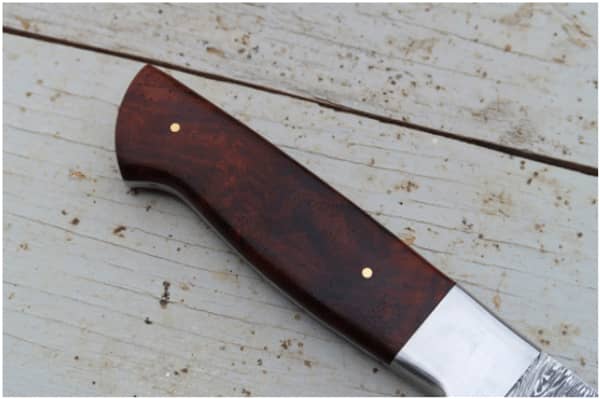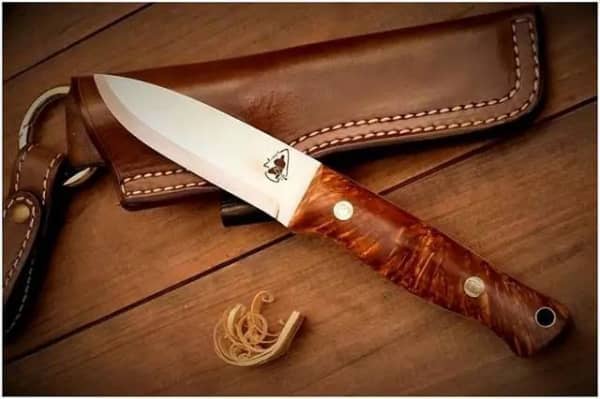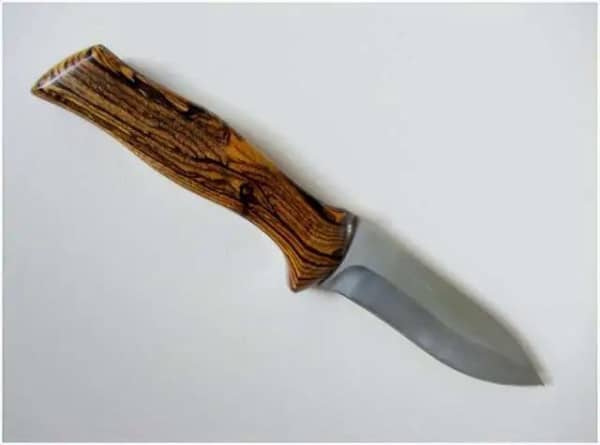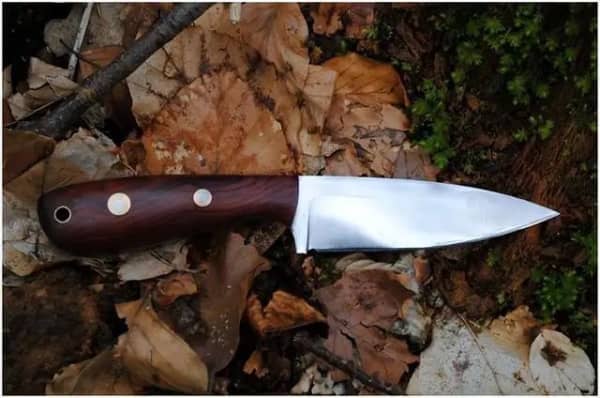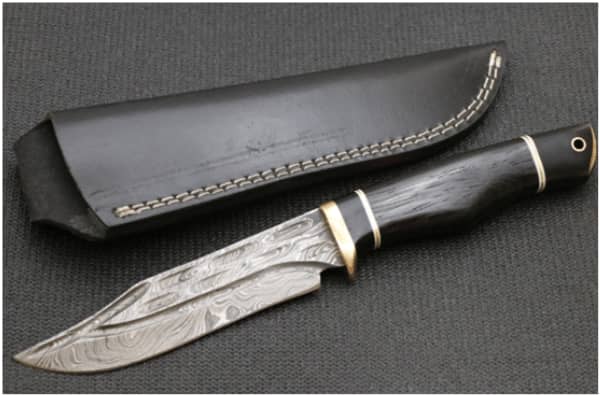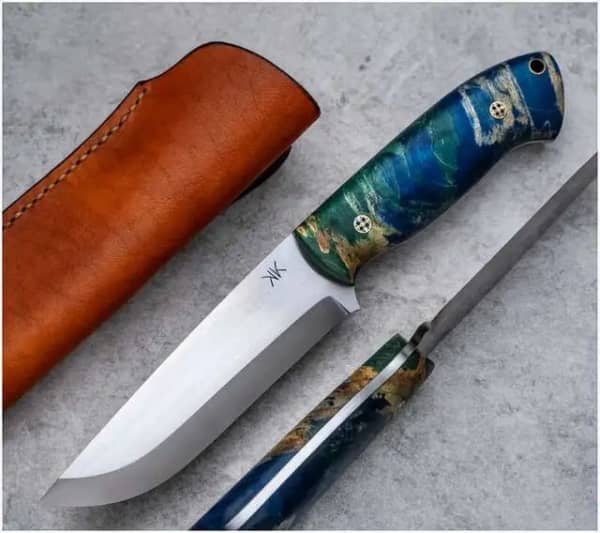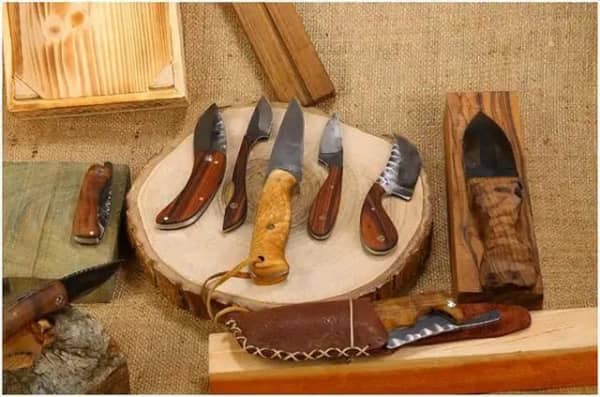Whenever people talk about knives, they are often talking about the blade itself. Not many people think about another important part of a knife: the handle. This is a mistake! When it comes to knife handles, that’s where the style and variety come in. Different colors, shapes and designs – they all exist above the handle.
You could say that the personality of the knife comes from the handle, and all the practical use happens on the edge. If you want a stylish and durable pocketknife, you need to choose the right material for the handle.
▲Choose the ideal wood for the handle
Why use wood for the handle?
You can choose from many materials for the handle: plastic, metal, antler or even bone! But there’s one thing no one can deny: wood offers the perfect combination of durability, style, and practicality.
The metal handle is durable, but it doesn’t look very usable, and it’s cold to hold in winter. The antlers and bones both look great, but they’re not practical due to the bumpy surface and the awkward grip. Wood, by contrast, can do it all.
Hardwood/Softwood/Stable Wood
There are many kinds of trees in the forest, but there are only two or three types of wood in general. You will find that most woods are either hardwoods or softwoods, and most knife handles are made of hardwoods.
Without going into specifics, hardwoods are generally denser, more durable and, as the name says, tougher. Cork, on the other hand, is almost never used for knife handles.
Stabilized wood is a whole different kind of wood. The wood goes through a process of drying and infusing it with chemicals, which we call stabilized wood. This process is often used to strengthen wood against defects or inherent defects. Most of the woods in the following list are either hardwoods or stable woods, as softwoods are generally not good enough to be used for knife handles.
▲Various handle wood materials
Best Woods for Knife Handles
- Birch Laminates
Birch Laminate: Birch is almost everywhere: it can be found in the United States and Europe, all the way to Russia. This wood is commonly used for knife handles and many other things like furniture and boats.
Birch trees are used for many things for a reason other than their availability. Birch trees are environmentally friendly because they grow quickly and do not require further processing; they require little maintenance, making them ideal for kitchen knives and hunting knife handles; and they are easy to restore if they become discolored by water.
In summary, birch is great for knives, as constant use and constant water exposure can cause wear and tear on knives, and they look great too.
▲ Birch laminate handle
- Walnut
You may be familiar with walnuts (that is, walnuts that bear edible nuts). It is used in furniture, guns, musical instruments and many other things. When it comes to knives, walnuts are a contentious subject – some love it, some hate it.
The thing about walnut is that it’s elegant and gorgeous, but at the same time a bit wobbly — not the best combination for a knife you’ll be using a lot.
If you’re looking for a one-of-a-kind knife handle, walnut should be your first choice – but only if you’re going to use the knife occasionally. If you want a reliable knife for hunting or cooking, you should move on to your next wood for the handle.
▲Walnut handle
- Amboyna Burl
If you’re looking for an expensive knife handle that will give your money’s bang for your buck, you might want to check out the Amboyna Burl.
When it comes to knife handle material, it’s one of the most expensive types of wood — but it’s not as unique as you might think. It’s everywhere these days, but that doesn’t mean it’s deprived of quality.
Burl is both stable and strong, it is not easy to oxidize and decompose. It looks simple and elegant on the handle. This is the best option for knives that you can carry around, but not necessarily use every day. For what it’s worth, it’s more suitable for custom knives than something you use for kitchen knives.
▲Apona wood\Qinglong wood burl handle
- Oak
Gorgeous, stable, durable and easy to carve. Oak is everything you’re looking for in a knife handle. It’s also cheap — at least when it comes to wood. That’s why it’s so commonly used.
If you’ve ever held a beautiful knife with some sort of inscription or pattern on its wooden handle, you’ve probably come across oak.
Oak colors are usually on the lighter side of the palette. Knives with oak handles will be light brown in color. A color you’re probably familiar with, since oak is commonly used in kitchen knives – this is probably the way to go.
▲ Oak handle
- Rosewood
Like oak but much darker in color, mahogany is also an inexpensive alternative for your knife handle needs. Needless to say, it’s easy to find all over the world, and it’s different around the world.
If you’re looking for good rosewood, you need to look for Indian rosewood. It’s tough against rough handling, it’s durable, and it’s so resistant that even termites can’t bite through it.
Rosewood is great for just about everything. Kitchen knives, hunting knives and decorative knives. Due to its durability, it is best chosen as a knife for everyday activities.
▲ Mahogany handle
- Bloodwood Satine
Beautiful colors, durable, stable, gorgeous feel. All four of these things define bloodwood – especially when it’s used for knife handles. It is generally not used for knife handles because other more preferred wood types such as mahogany or oak.
Either way, it’s a solid choice for knife lovers everywhere—especially those who don’t like the usual colors of oak and mahogany but are looking for a more vibrant red handle.
Bloodwood is ideal for kitchen knives, hunting knives and custom knives. Its only downside is that it requires a little maintenance to maintain its beautiful color.
▲Bloodwood satin handle
- Bocote
Bocotte is an odd-looking wood. It will make a difference to any knife handle. It has a yellow color with black stripes running through it. It’s durable and stylish — but all those things come with a price, and it’s expensive.
This exotic wood can be on the expensive side, making it rather rare to find it in knife handles. Due to its exotic properties and rarity, it is ideal for custom or decorative knives.
▲Bocott handle
- Cocobolo
Coco Polo is probably the most durable of all woods—or at least the most durable of them all. It is naturally resistant to most things, including insect bites. It’s also suitable for both dry and wet environments – a handle made of coconut wood is a knife that will last a long time no matter how much you use it.
Due to its durability and wide range of colors (from yellow, red, purple to black and everything in between), the Coco Polo is in high demand within the knife manufacturing industry throughout the world. Because of this, it is always considered an expensive substitute.
If you can afford to use a Coco Polo for a handle, you know it will last – making it a great choice for all knives.
▲Coco Polo handle
- Ebony
One of the prettiest woods on this list, like anywhere else. Its dark complexion makes it very elegant and very popular. It is one of the most expensive woods because it looks good on its own.
Ebony is not only elegant and gorgeous, but also durable, making it perfect for custom knives. The only downside to ebony is that it is expensive.
▲Ebony handle
- Stabilized Wood
Stabilized wood is a kind of wood after special process, also known as stabilized wood, and it is also a kind of high-density wood. Stabilized wood is to dry the wood, then evaporate all the internal moisture, and then dry it dry wood is cured, and the air in the wood is sucked out with a vacuum pump, and then filled into the wood with color paste and artificial resin, and finally presents beautiful and gorgeous patterns and unique textures.
Stabilized wood will not deform or crack and will not fade over time. It is generally used in the decoration of high-end products such as knife handles, cars, and airplanes. The price is also more expensive.
▲Stable wooden handle
Then what kind of wood do you need?
When it comes to knife handles, no one wood is right for everyone. You need to consider what kind of knife you want and what kind of wood is suitable for its purpose.
You might like the look of ebony on a knife, but it shouldn’t be your choice if you want a kitchen knife – instead, you’d be better off considering oak or mahogany.
If you want something elegant and exotic, coconut wood is your best choice. If you want a handle that will last long enough and don’t care too much about its looks, then birch is the right choice.
You need to find the price-to-durability ratio that works for you. Once you’ve done that, you can also bring color and style to the table and make a decision.
▲Choose the handle material you want most according to the characteristics of the wood
Conclusion
When it comes to wood and knife handles, the only certainty is choosing a hardwood. After that, it’s up to you and what you need. There are many factors involved: color, durability, density, and price range.
Making the right choice is a combination of four factors. Sometimes, though, you have to choose one over the other, like choosing durability over price on a kitchen knife, or density over color on a hunting knife. Anyway, at the end of the day, it’s your knife – it’s your choice!
Take your time though, your knife should last you a long time – when you invest make sure you’re getting your money’s worth!
Click to have more Shieldon EDC knives and tools fun.

